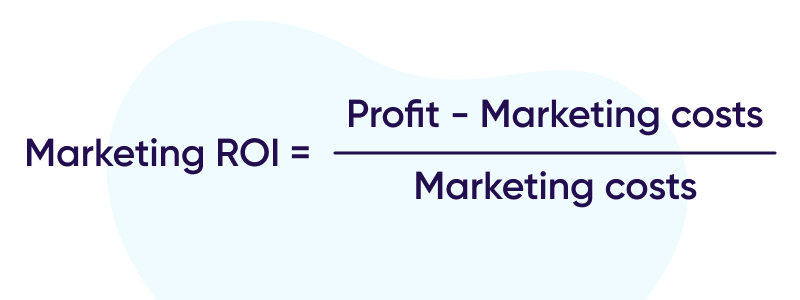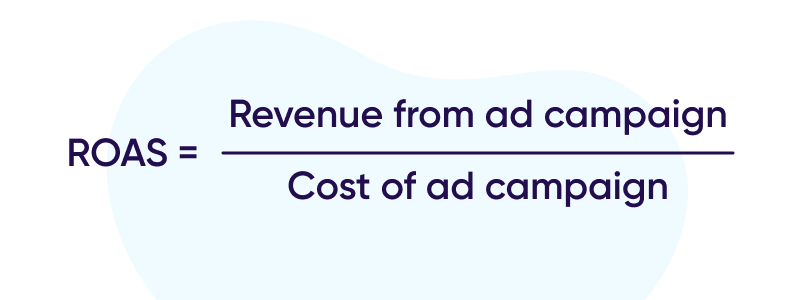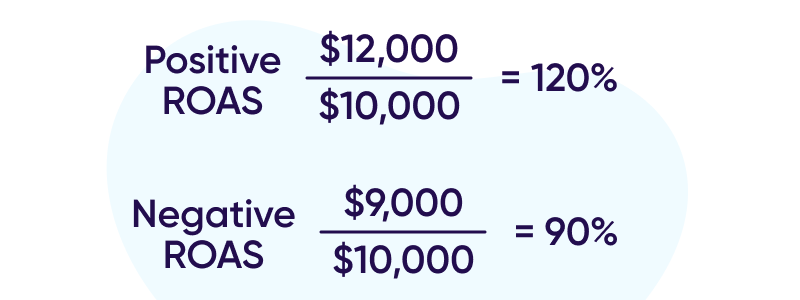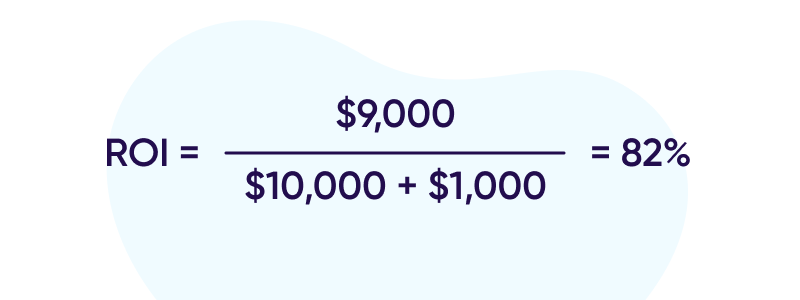
Spot the difference: ROI vs. ROAS

Three words, one tricky calculation: Define marketing success.
For many years, marketing success was characterized by proving that you were delivering a high Return on Investment (ROI). It was, and still is, used to help justify marketing spend.
However, in today’s digital world where competition is stiff and the market is saturated, success is often defined in terms of revenue, and therefore there is a growing focus on Return on Ad Spend (ROAS).
What’s the difference? Aren’t they basically the same thing anyway?
The answer to that question is no. They may have similarities in that they both help to prove whether a campaign was successful or not, but that is where the similarities end.
In this blog we will uncover the differences (and similarities) between the two metrics and explain when and why to use both ROI and ROAS.
What is ROI
ROI stands for return on investment. It is a metric that is commonly used in all forms of business to measure how effective your investments are at generating revenue. ROI in its simplest form is used to understand what you get back in comparison to what you’ve put in.
For the purposes of this blog we will be talking specifically about marketing ROI, or calculating the impact of your marketing initiatives on growth and revenue. ROI takes into account the entire investment and includes additional marketing resources such as IT, software costs, design, distribution, etc.
In layman’s terms it calculates the total cost and asks was this campaign profitable?
To marketing ROI formula is simple.

For example, if your marketing costs for a campaign are $50, but you make $200 in profit in the example above your marketing ROI would be 300%. Or it could be that your profit is $100 and your marketing costs were $200. In this instance your marketing ROI would be -50%.
In real terms that means for every $1 you put into your marketing campaign you get $3 back. In the second example, you lost $0.5 for every $1 spent.
When it comes to mobile advertising you can use ROI to assess if a specific ad was profitable, and furthermore did the ad contribute positively to your bottom line?
So what constitutes a good ROI when it comes to mobile marketing?
Well that really depends on the goals of your app. Essentially if you are ROI positive (i.e. over 1) and keeping your efficiency ratio low then you’re doing well. That means you are generating more revenue than you are expending.
What is ROAS
ROAS stands for return on ad spend. Simply put, it answers the question how much revenue was generated for every dollar spent on an ad/campaign.
Unlike ROI, ROAS does not calculate the overall profitability of the entire marketing investment and does not take into consideration other additional costs. Instead the formula is purely focused on the cost of the ad and how much revenue you generated as a direct result.
To calculate ROAS use the following formula:

For example, say you generate $1,000 from an ad on TikTok which costs you $200. Your ROAS in this case is 500%, meaning you made $5 for every $1 you spent.
There are no specific rules to what constitutes good ROAS or the time it takes to generate a positive ROAS. It depends on the benchmarks set, the brand goals, the margins, the channel, and the vertical.
Even within the same verticals and across different channels there may be varying approaches to what is good ROAS. For example, making $5 on every dollar spent on Facebook may be a reason to be concerned, but on Google AdWords could be a reason to celebrate.
For many marketers ROAS is the foundation for understanding the success of a campaign. At the end of it all, unless the goal of the campaign is to simply raise brand awareness, then generating revenue is what it is really all about, and that is what ROAS demonstrates.
How to measure your app marketing’s true ROI
What is the difference between ROI and ROAS
Many marketers get confused between ROI and ROAS because your ad spend is still part of your investment.
However, it is not the whole investment and there lies the main difference between the two.
Take the example of a blog. It takes time to research, to write, and to promote, and it may not obviously contribute to a conversion. However, it did help increase traffic to your website which in turn increased conversions and revenue.
The blog was part of the overall investment, so the resources it took to create, distribute, and house the blog are all part of the ROI calculation.
Compare that to the much cruder ROAS that is purely interested in the revenues generated directly from a specific ad that you paid an ad network to run.
To put it another way, ROI is a macro approach and used for long-term strategic planning, whereas ROAS is micro used for short term tactics.

So, which metric should you use?
Of course it will depend on what you are looking to understand, if it is pure revenue or the overall profits, but both are crucial to building a complete picture of your marketing efforts.
In an ideal world, ROI and ROAS complete each other. As we can see, relying on just one could be misleading and cause a bleed in your marketing budget.
Let’s look at some examples.
You’ve spent $10,000 on TikTok campaign A, which generated $12,000. Campaign B on the other hand drove in only $9,000 from the same budget. Therefore, campaign A is ROAS positive at 120%, but campaign B is ROAS negative at 90%. As you can see, 100% is essentially the break even point.

But wait. Campaign B also required different design specs and messaging. Let’s say these extra costs amounted to $1,000, so your entire campaign was therefore not $10,000 but $11,000.
When you factor in the other investments over and above the ad spend you realize that the ROI profitability is even smaller at 82% compared to the 90% ROAS.

As you can see, both ROI and ROAS have their own value when it comes to understanding the success of your marketing campaigns.
Key takeaways
There are some key differences between ROI and ROAS:
- ROI is used to determine the profitability of your entire marketing efforts. It takes into account all of the additional expenditure over and above the cost of the campaign.
- Because it considers the entire investment, ROI is an important metric for long-term strategic planning.
- ROAS tells us how much revenue was generated for every dollar spent on a specific ad/campaign. In today’s mobile first world this is a key metric for digital marketers and used for tactical planning.
- It is important to look at both forms of profitability and therefore marketers should measure both ROI and ROAS.





